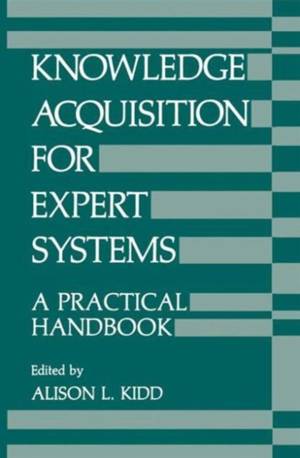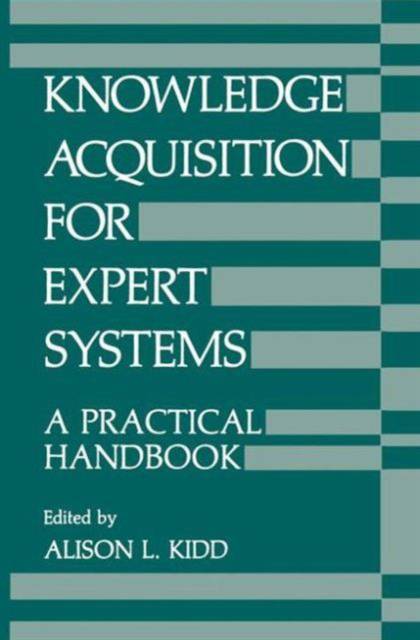
- Afhalen na 1 uur in een winkel met voorraad
- Gratis thuislevering in België vanaf € 30
- Ruim aanbod met 7 miljoen producten
- Afhalen na 1 uur in een winkel met voorraad
- Gratis thuislevering in België vanaf € 30
- Ruim aanbod met 7 miljoen producten
Zoeken
Knowledge Acquisition for Expert Systems
A Practical Handbook
€ 100,95
+ 201 punten
Omschrijving
Building an expert system involves eliciting, analyzing, and interpreting the knowledge that a human expert uses when solving problems. Expe- rience has shown that this process of "knowledge acquisition" is both difficult and time consuming and is often a major bottleneck in the production of expert systems. Unfortunately, an adequate theoretical basis for knowledge acquisition has not yet been established. This re- quires a classification of knowledge domains and problem-solving tasks and an improved understanding of the relationship between knowledge structures in human and machine. In the meantime, expert system builders need access to information about the techniques currently being employed and their effectiveness in different applications. The aim of this book, therefore, is to draw on the experience of AI scientists, cognitive psychologists, and knowledge engineers in discussing particular acquisition techniques and providing practical advice on their application. Each chapter provides a detailed description of a particular technique or methodology applied within a selected task domain. The relative strengths and weaknesses of the tech- nique are summarized at the end of each chapter with some suggested guidelines for its use. We hope that this book will not only serve as a practical handbook for expert system builders, but also be of interest to AI and cognitive scientists who are seeking to develop a theory of knowledge acquisition for expert systems.
Specificaties
Betrokkenen
- Uitgeverij:
Inhoud
- Aantal bladzijden:
- 208
- Taal:
- Engels
- Reeks:
Eigenschappen
- Productcode (EAN):
- 9780306424540
- Verschijningsdatum:
- 31/07/1987
- Uitvoering:
- Hardcover
- Formaat:
- Genaaid
- Gewicht:
- 439 g

Alleen bij Standaard Boekhandel
+ 201 punten op je klantenkaart van Standaard Boekhandel
Beoordelingen
We publiceren alleen reviews die voldoen aan de voorwaarden voor reviews. Bekijk onze voorwaarden voor reviews.







